
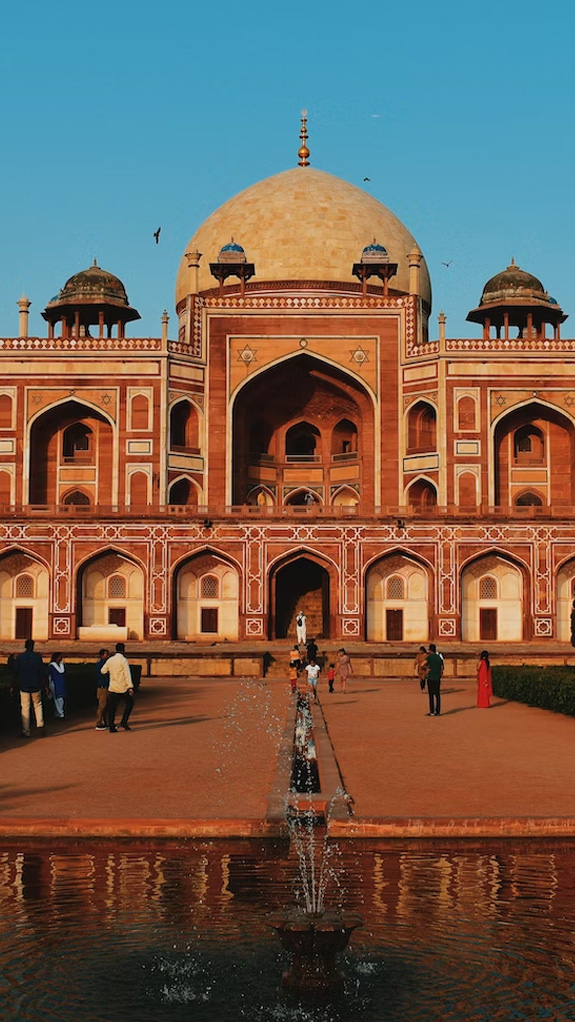
Sightseeing
Delhi the capital India is a perfect amalgamation of ancient and modern. It is fast-moving cosmopolitan city, proud of its rich cultural heritage. Delhi is a city of variety, vivacity and vibrancy.

Red Fort is a masterpiece of architecture and one of the most popular spots for tourists from both India and abroad. This colossal fort on the banks of the river Yamuna, built by Shahjahan as the citadel of the 17th Century Delhi is a significant link between the past and the present, for it is from here that the prime minister of India addresses the people on the Independence Day (August 15th).
Mughal Emperor Shahjahan started construction of the Red Fort in 1638, which was completed in 1648. The fort contains - halls of public and private audience, domed and arched marble palaces, plush private apartments, a mosque and elaborately designed gardens. Even today, the fort continues to be an impressive evidence to Mughal grandeur.
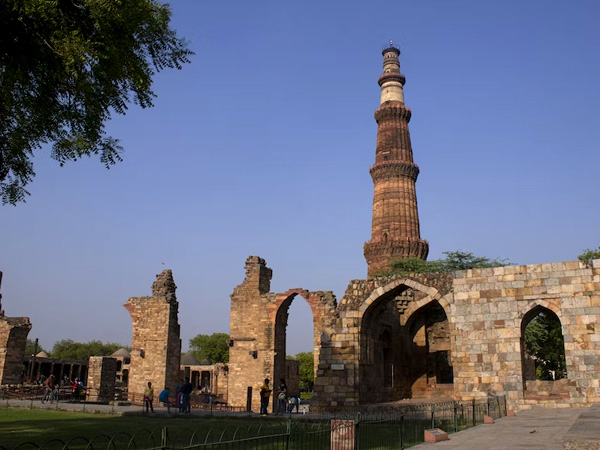
Built in 1199 by Qutub-ud-Din, Qutub Minar is one of the most visited tourist destination of Delhi. Qutab-ud-din Aibak, the first Muslim ruler of Delhi, commenced the construction of the Qutub Minar in A.D. 1193, but could only complete its basement. His successor, Iltutmush, added three more stories, and in 1368, Firoz Shah Tuglak constructed the fifth and the last storey. The development of architectural styles from Aibak to Tuglak are quite evident in the minar. Qutub Minar is still the tallest stone tower as well as one of the finest Islamic structures ever erected in India.
The purpose of building this beautiful monument is still not known, as some believe that it was built as a tower of victory to signify the beginning of the Muslim rule in India, while others say it served as a minaret to the adjacent mosque and was used by the muezzins to call the faithful to prayer. Qutub Minar rises to 72.5 m high and one has to climb 379 steps to get to the top.The diameter of the base is 9.3 m while the top floor measures 2.7 m in diameter. The main mosque near the minar consists an inner and outer courtyard, the pillars of which is surrounded by an exquisite collonade, which are made of richly decorated shafts.
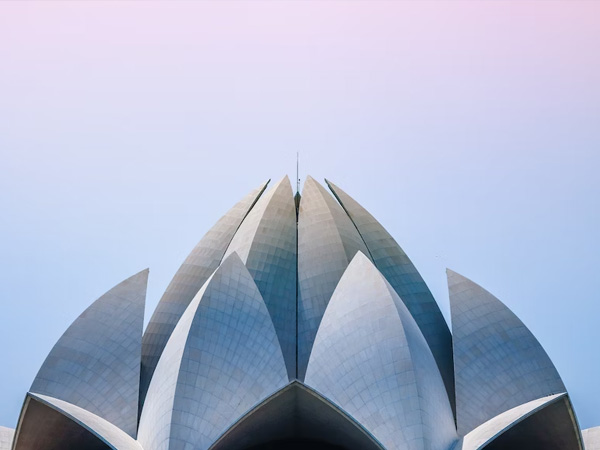
Lotus Temple, also known as the Bahai Temple is located in Kalkaji in the south of Delhi India. The most captivating architectural wonder of the 20th century, the Lotus temple is the place which beckons people from all the sects and religions. Shaped like a Lotus in white marble, cement, dolomite and sand, the temple lures every single traveller to Delhi India. Lotus Temple or Bahai Temple is an ideal location to sit and meditate for its soothing settings. Even though visited by thousands everyday, the Lotus Temple is always very peaceful and tranquil.
The Lotus Temple built in 1986 is an architectural marvel of the Bahai faith. The Bahai Faith is the youngest of the world's independent religions. Its founder, Bahadullah (1817-1892), is regarded by Bahais as the most recent in the line of Messengers of God that stretches back beyond recorded time and that includes Abraham, Moses, Buddha, Zoroaster, Christ and Muhammad.
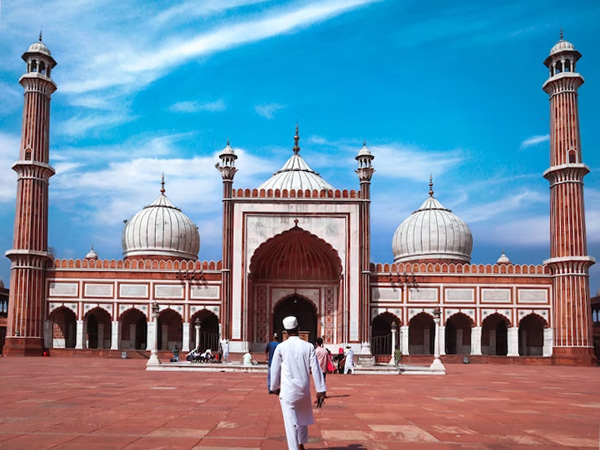
The great mosque of Old Delhi, built in 1656, is the final architectural extravagance of Shah Jahan. With a courtyard capable of holding 25,000 devotees, it is largest mosque in India. Located close to Chandani Chowk and the colossal Red Fort, the mosque receives large number of visitors coming to Delhi.
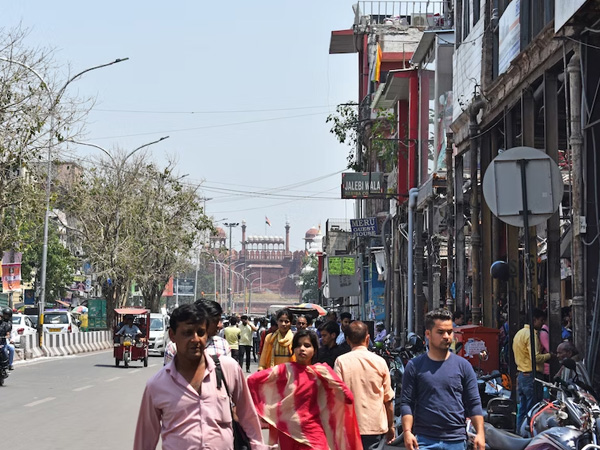
The City of Shahjahanabad was the capital of Shah Jahan but little remains of that old city. The Old Delhi or the walled city served as the capital for many emperors. Today, remains of the historical city are the gates like - Kashmiri Gate, Ajmeri Gate, Turkman Gate, Delhi gate. Near Delhi Gate is Feroz Shah Kotla, close to this is kept the Ashokan Pillar which was brought from Meerut by Feroz Shah Tughlaq.
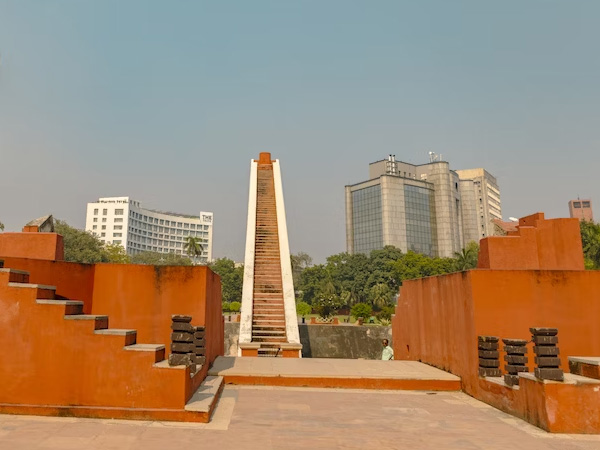
Few minutes walk from Connaught Place is a strange collection of solomon coloured structures. These were built by Maharaja Jai Singh and is actually an observatory. Though not as large as its compatriot in Jaipur Jantar Mantar at Delhi also an attraction for the tourists. The astonishing part of these observatories is that they can calculate many astronomical movements very accurately.
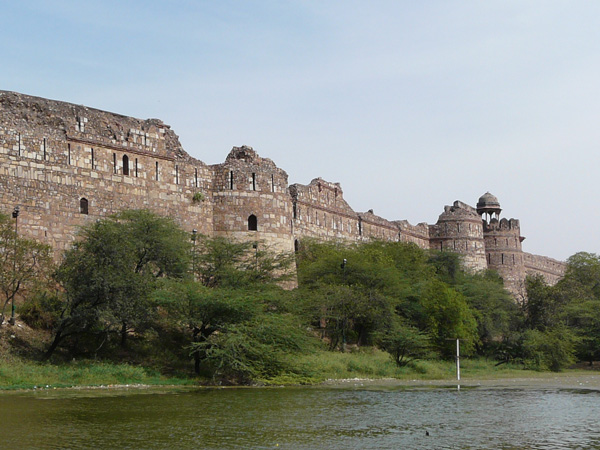
It is believed that the Pandavas had built their capital, Indraprastha at the place where the old fort stands today. This fort, now in ruins, was the seat of administration for many emperors. The legendary Prithviraj Chauhan ruled from here till he was defeated by Abdali in the battle of Panipat. A new light & sound show is held by the Department of Delhi Tourism every evening. Timings and Tickets are available from the tourist office.

Flanked by ornamental ponds and lawns, Rajpath is host to the Republic Day Parade. The two secretariat buildings and Rashtrapati Bhawan on the Raisina hills are located on the two sides of this immensely broad road. India Gate is towards the eastern end of Rajpath.
India Gate is a 42m high stone arch of triumph. It bears the name of the 85,000 Indian Army Soldiers who died in the campaigns of WW1, the North-West Frontiers operations and the 1919 Afghan Fiasco. Below the arch is the memorial to the unknown soldier.
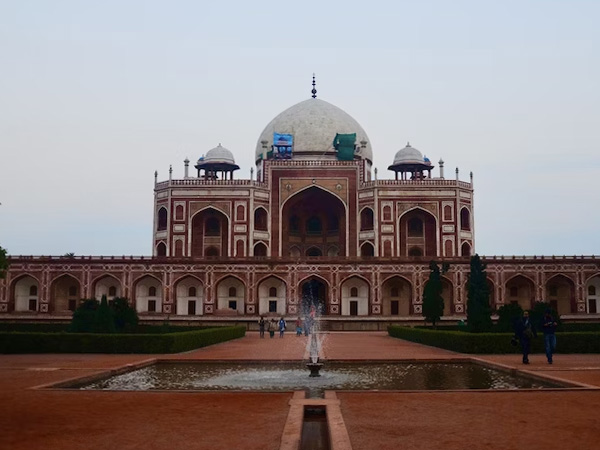
Built by the wife of Humayun, Haji Begum in the mid 16th century, this red sand stone structure is considered to be the predecessor of Taj Mahal. The structure is one of the best example of Mughal Architecture. Humayun's wife is also buried in the red and white sandstone, black and yellow marble tomb. The entry in the complex is free on Fridays.
Famous Temples in Delhi
Lakshmi Narayan Temple
This temple was build by G. D. Birla in 1938. This beautiful temple is located in the west of Connaught Place. The temple is dedicated to the goddess of prosperity and good fortune. The temple has well grafted gardens. It is also known as the Birla Mandir.
ISKCON Temple
Completed in 1998, this is a complex of temples. Built on a hilly place this temple is dedicated to the Lord Krishna and was built by the Hare-Rama Hare- Krishna cult followers. This complex is elegantly build and is one of the largest temple complexes in India
Chattarpur Mandir
A complex of temples called Chattarpur mandir is located beyond the Qutab Minar in Mehrauli. Dedicated to Goddess Durga. Build in South Indian style the temple complex is spread over a large area with beautiful lawns and gardens. Though devotees visit these temples through the year, during the navratras devotees come from near and far. During the festivals there are special bus services to these temples.
Bangla Sahib Gurudwara
A magnificent and spacious bungalow in Delhi owned by Raja Jai Singh Amber (Jaipur) who commanded great respect and honour in the court of Mughal Emperor Aurangzeb now enjoys the status of a holy shrine called Gurdwara Bangla Sahib. The eighth Guru Sri Harkishan had stayed here for a few months as guest of Raja Jai Singh. Since then it has become a place of pilgrimage for both, Hindus and Sikhs. They pay their respect to the memory of Guru Harkrishan, nominated as successor by the seventh Guru, Sri Har Rai. He passed away on October 6, 1661 A.D. When only a little over five year old, he had been tried and tested as a perfect fearless and fully illuminated soul.
Museums in Delhi
National Rail Museum
National Rail Museum is located In Chanakya Puri. It is unique in its collection of rail engines and locomotives. India was among the countries which has had railway lines since 19th century. The locomotives in the museums are displayed in open. But they also have a small inhouse museum which gives the details of the progress and development in the history of railway in India.
Crafts Museum
Crafts museums is at Pragati Maidan Grounds. Open from 10am-5pm daily.
Gandhi Darshan & Gandhi National Museum
Gandhi Darshan & Gandhi National Museum is across Rajghat and Gandhi smriti is on Tees January Marg.
Dara Shikoh Library
Dara Shikoh Library is an archaeological museum in Civil Lines and is open from 10am - 5pm, Monday to Friday.
Dolls Museum
A unique museum of Dolls is located near the ITO crossing on the Bahadur Shah Jafar Marg . These dolls are collected from different parts of India as well as from other countries of the world. These dolls reflect the tradition and culture of the region from where they come. Children Book Trust of India is In the same building. This is an organisation which is committed to provide quality books for the little ones.
National Science Centre
National Science center is located near Pragati Maidan. This center is famous for the models which can be operated by the visitor himself. Children are particularly fascinated by the mysteries of science. Open through out the week except on Mondays.
National Museum
Located on Janpath, National museum is one of the treasure houses of the our glorious past. The museum has a large collection of excavated items many of which date back to 2nd and 3rd century B.C. The museum has separate section for the Harrapa (Indus valley civilisation) collection. Recently the museum added a very interesting section of Jewellery collection. Apart from the regular sections the museum has regular exhibition on different themes. Information about any such exhibition can be obtained from the museum itself or from the tourist offices. A daily film show is organised in the auditorium of the museum and it is closed on Monday.
Museum of Natural History
The museum gives an over all look of the evolution of Earth and its natural history. The museum is located on the Barakhamba Road and is closed on Mondays.
Nehru Museum & Planetorium
The Teen Murti house was the residence of India's first Prime minister Pt. Jawaharlal Nehru. After his death the house was converted into a memorial. The Nehru memorial has a collection of gifts and many other items which he possessed. Nehru Planetorium is within the compound of Teen Murti. This planetorium gives a overview of the Indian Space program. There are daily film shows which are screened in a specially designed auditorium. These films are meant to give information about the Universe or any other topic related to that. The Capsule in which Rakesh Sharma went into space is also kept here.
Eating Out in Delhi
Traditionally, all the best restaurants in Delhi were to be found in the 5-star international hotels. To an extent, this is still the case, although beyond the confines of the big hotels, the prosperity of Delhi's enormous middle class has ensured that a huge number of excellent restaurants have sprung up where you can be assured of delicious food at a fraction of the price charged in the big hotel dining rooms.
Alcohol (domestic and foreign) is widely available at most places, except budget eateries which often lack the requisite liquor license. The price of alcohol is variable, with the fancy places charging as much as triple the price of a mid-range eatery. Indian wine has come a long way in recent times and is definitely worth a try. Indian beer is excellent, with Kingfisher long being lauded as the national favourite.
When it comes to food, you can find everything from traditional Indian curries to a commendable assortment of international fare. There are also a large number of restaurants in Delhi that are wholly vegetarian. Most a non-veg restaurants offer a wide variety of a veg dishes.
La Piazza
An old favourite, located in the plush Hyatt Regency hotel, La Piazza is the place to come for authentic Italian food, prepared with the finest ingredients and following traditional recipes. Menu items range from crisp wood-fired pizzas to tender (imported) lamb chops and an enticing range of magnificent pasta dishes. The fresh salads and wickedly rich desserts should not be missed.
Hyatt RegencyBhikaiji Cama Place, Ring Road
Tel: (011) 2679 1234.
Ego Thai
Serving very commendable Thai food in a smart-casual setting, Ego Thai attracts Delhi's fashionable crowd who come here after quaffing cocktails at the adjoining lounge-bar. The food gets a round of applause for authenticity, particularly the traditional Thai curries, and there are some positively sublime Thai soups that are so satiating they can replace a meal.
53 Community Centre, New Friends ColonyTel: (011) 2633 1181.
Karim's
Established in 1913, Karim's is something of a Delhi institution. It serves robust Mughal food in rudimentary but clean surroundings off a courtyard that is close behind Jama Masjid in Old Delhi. The tandoori chicken and tandoori burra (mutton) are both highly recommended, as are the succulent kebabs. There is an interesting selection of traditional Indian breads, from stuffed naan to paper-thin romali roti, which are perfect for mopping up every last drop of the lip-smacking curry sauces. Unlicensed.
16 Jama MasjidTel: (011) 2326 9880.
Saravana Bhavan
Saravana Bhavan is arguably the best place in town for flavour-packed inexpensive (vegetarian) South Indian fare. It does a tremendous job of dosas, idlis and uttapams and also prepares awesome thalis. There is a range of excellent take-away namkin (savoury snacks) and mithai (Indian sweets) at low prices. So popular is this restaurant that you may have to queue for a table.
46 Janpath (smaller branch at 15 P-Block, Connaught Place)Tel: (011) 2334 7755.
Swagath
This popular chain specialises in Indian cuisine (veg and non-veg) and has a particularly glowing reputation for its Mangalorean and Chettinad offerings. It also does a fine job of Mughlai cuisine, with Chinese food making a cameo appearance. The seafood dishes (fish, prawns, crab, squid and lobster) are rewarding, most prepared in flavoursome spice marinades. This convivial multi-level restaurant attracts an endless stream of hungry diners, making advance reservations wise.
9 Defence Colony MarketTel: (011) 2433 7538.
Big Chill
A hip and happening cafe-style eatery, the Big Chill is highly recommended for its cheerful, laid-back ambience as much as for its fabulous food. The menu is predominantly Continental, with an admirable selection of inventive pastas, salads, baked potatoes and much more. The creamy smoothies, milkshakes and ice creams are a veritable treat, as are the freshly baked cakes and slices.
Khan MarketTel: (011) 2648 1020.
Shopping in Delhi
Delhi is unique in that it has representative outlets for the handicrafts of each Indian state. This in it self presents a staggering array of goods, and at very affordable prices. In the last decade there has been a dramatic change in Delhi's markets. Upwardly mobile lifestyle has led to greater sophistication in display and upgrading of various markets in terms of availability of items.
For visitors to Delhi, shopping is high on the list of "things to do". Tourists find a wide choice of items- such as carpets, silks, jewellery, leather and silver ware, handicrafts and handprinted cotton - that are synonymous with India. Each item is available in a range of prices, depending on the quality and the outlet.v
Another interesting is that each market has its own, distinctive ambience and adds its own flavour to the experience of shopping. Haus Khas Village, Connaught Place and Chandni Chowk are worlds apart from one another, yet each of them reflects an aspect of this many - faceted city. In fact one of the fascinating ways of understanding a city is by wandering through its market places for it is here that contemporary culture is most visible to the outsider.
The exploration of Delhi's markets could be begin at Chandni Chowk. Despite the pressures of traffic and population, its historic land marks survive to tell the story of the last three centuries. Many of the shops here are more than 100 years, old and the mesh of lanes and bylanes is full of surprises. Leading off Chandni Chowk are Dariba, the silver market, Khari Baoli, the spice market and Kinari Bazar for trimmings and tinsel. In some of these bazaars the item for sale are manufactured at site, which lands a special charm to the shopping experience well integrated into the culture of the old city, these bazaars offer the visitor a glimpse of life in Old Delhi.
There are some antique stores behind Jama Masjid, and more lining the entrance to the Red Fort, where the Meena Bazar once was. These offer items arranging from jewellery to painting and furniture, and cater almost entirely to tourists.
Connaught Place, New Delhi's original shopping arcade was planned as part of the Imperial capital in 1911. On Baba Kharak Singh Marg, are the numerous government State Emporia. Which afford a glimpse of the handicrafts of each state. So does the recently- inaugurated new Central Cottage Industries Emporium on Janpath. Across the road from "Cottage" as it is popularly known, are the inviting stalls along Janpath.
The Tibetans sell jewellery and ritual objects, while closer to Connaught Place are available embroideries from Gujarat and Rajasthan, readymade garments and bric- a - brac. When the wheather is good it is pleasant to amble down Janpath, where bargaining is the order of the day.
Sundernagar Market is a fine place to shop for antiques and silver jewellery. The well - appointed stores keep a choice selection, especially of silver jewellery from Ladakh, semi- precious stones, some textiles and brass, copper and silver object d'art.
Not far from Sundernagar is the Crafts Museum Shop, attached to the museum in Pragati Maidan. Moving further south are the up market shopping centers of South Delhi- South Extension, Greater Kailash I and II, Green Park and Hauz Khas Village.
The haunt of the nouveau riche, these markets offer a combination of ethnic chic and designer lebels, Indian and international. Hauz Khas Village has set a very interesting trend as market. Over the countries, a village had developed around the medieval college and the tomb of Firoz Shah Tughlaq. A few years ago, an association called Dastakar - set up a showroom in the village. Now the village has a plethora of boutiques, galleries and restaurants which coexist with the buffalos, cow pats and men smoking hookahs on charpoys. Far from being a deterrant, the "rural" ambience is a positive attraction.
Other villages like Mehrauli, Khirkee and Lado Serai are fast following suit. Seeing the popularity of crafts bazaars held periodically in the capital, Delhi Tourism has set up a permanent outlet for craftspersons at Dilli Haat, where space and the availability of Indian cuisines make the visit a very pleasant experience. A more up market outlet for Indian handicrafts and antiques is the bazaar near the Qutub Minar.
The Santushi Shopping Arcade opposite the Ashoka Hotel has become another popular up market haunt. Developed by the Air Force Wives Association, it has a select number of boutiques where apparel, furnishings and accessories are available. A restaurant and patisserie add to the quiet charm of the place.

